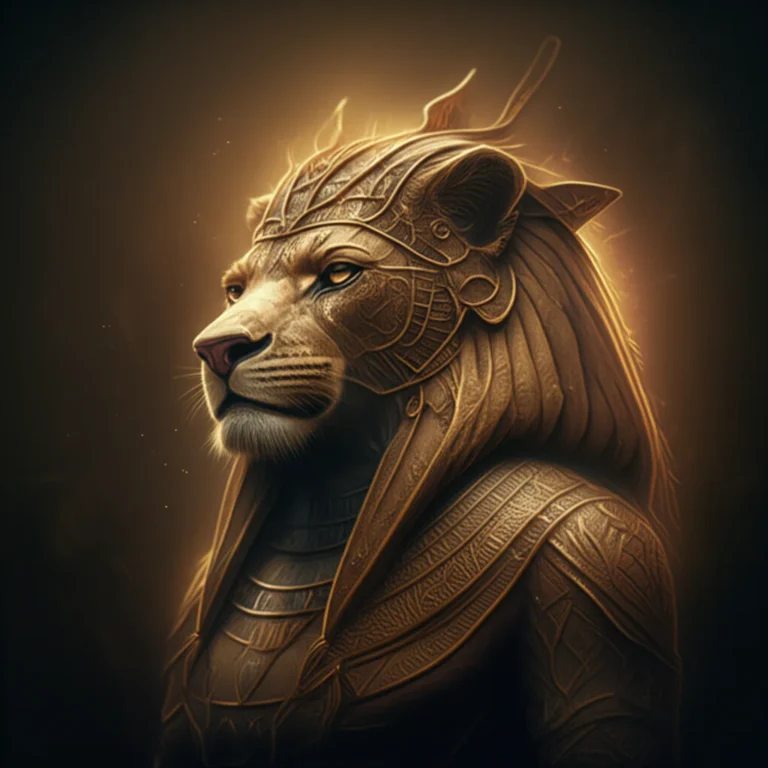Support our educational content for free when you purchase through links on our site. Learn more
Unlocking the Ark of the Covenant: 9 Mysteries & Legends Revealed 🔍 (2025)
Imagine a golden chest so sacred and powerful that it could part rivers, topple city walls, and even strike down those who dared touch it improperly. The Ark of the Covenant is not just an ancient relic; it’s a symbol wrapped in divine mystery, historical intrigue, and spiritual significance that has fascinated explorers, theologians, and storytellers for millennia. But where is it now? What secrets does it hold? And why does its legend still captivate the world today?
In this comprehensive guide, we at History Hidden™ peel back the layers of history, archaeology, religion, and folklore to reveal 9 essential mysteries and legends surrounding the Ark. From its divine origins on Mount Sinai to its epic journeys across ancient lands, from miraculous powers to its baffling disappearance, we cover everything you need to know — and some surprises you won’t expect. Ready to embark on this sacred adventure? Let’s dive in!
Key Takeaways
- The Ark of the Covenant was a sacred gold-covered chest housing the Ten Commandments, Aaron’s rod, and manna, symbolizing God’s covenant with Israel.
- Its biblical journey included miraculous events like the parting of the Jordan River and the fall of Jericho’s walls.
- The Ark vanished after the Babylonian conquest, sparking enduring theories about its current location—from Ethiopia to hidden chambers beneath Jerusalem.
- It holds profound significance across Judaism, Christianity, and Islam, influencing theology, culture, and art.
- Despite centuries of archaeological quests, no definitive physical evidence has been found, preserving its aura of mystery.
- The Ark’s story teaches timeless spiritual lessons about faith, holiness, and divine presence.
Ready to explore the legends and lore of the Ark? Check out our recommended books and resources to deepen your journey:
- The Ark of the Covenant books on Amazon
- Explore related Folklore and Legends and Mythology Stories on History Hidden™ for more fascinating tales!
Table of Contents
- ⚡️ Quick Tips and Facts: Your Ark of the Covenant Cheat Sheet
- 📜 The Ark’s Genesis: Unveiling Its Divine Origins and Sacred Purpose
- 📦 The Ark’s Sacred Contents: What Lay Within the Holy Chest?
- 🌍 The Ark’s Epic Journey: A Divine Itinerary Through Ancient Lands
- 🔥 The Ark’s Miraculous Powers and Perils: Divine Intervention and Dire Consequences
- 🕵️♀️ The Ark’s Vanishing Act: Unraveling History’s Greatest Sacred Mystery
- 🙏 The Ark in Abrahamic Faiths: Its Enduring Significance Beyond the Hebrew Bible
- ⛏️ Archaeology and the Ark: The Quest for Tangible Evidence of the Lost Relic
- 🎬 The Ark’s Enduring Legacy: Pop Culture, Literature, and the Arts
- ✨ The Ark’s Spiritual Significance: Lessons for Today’s Believers
- ❓ Quick Tips for Aspiring Ark Enthusiasts: Understanding the Lore and Legends
- ✅ Conclusion: The Ark of the Covenant’s Unyielding Allure
- 🔗 Recommended Links: Dive Deeper into the Mystery
- ❓ FAQ: Your Burning Questions About the Ark Answered
- 📚 Reference Links: Our Sources for the Sacred Lore
⚡️ Quick Tips and Facts: Your Ark of the Covenant Cheat Sheet
Welcome to the ultimate Ark of the Covenant briefing! Whether you’re a history buff, a Bible mysteries enthusiast, or just curious about this legendary relic, here’s your fast-track guide from the historians at History Hidden™. For a deep dive into Bible mysteries, check out our Bible Mysteries category.
What is the Ark of the Covenant?
A sacred chest built by the Israelites, believed to house the Ten Commandments tablets, Aaron’s rod, and manna. It symbolized God’s presence and power among His people.
Key Facts:
- Material: Acacia wood, covered in pure gold inside and out.
- Dimensions: Approximately 4 ft long, 2.5 ft wide, and 2.5 ft high (2.5 × 1.5 × 1.5 cubits).
- Features: Golden “Mercy Seat” lid with two cherubim facing each other.
- Biblical Role: Led Israelites through the desert, parted the Jordan River, and brought down Jericho’s walls.
- Fate: Vanished after the Babylonian conquest; its current whereabouts remain a mystery.
Why care?
The Ark is a cornerstone of ancient Israelite religion, a symbol of divine covenant, and a magnet for legends, archaeological quests, and pop culture (hello, Indiana Jones!).
Quick Stats Table:
| Aspect | Rating (1-10) | Notes |
|---|---|---|
| Historical Significance | 10 | Central to Israelite identity |
| Archaeological Evidence | 3 | No confirmed physical discovery |
| Cultural Impact | 10 | Influences religion, literature, film |
| Mystery & Legend | 10 | Endless theories and lore |
Ready to unravel the layers of this ancient enigma? Let’s journey back to its divine origins!
📜 The Ark’s Genesis: Unveiling Its Divine Origins and Sacred Purpose
The Ark’s story begins on Mount Sinai, where Moses received divine instructions during his legendary 40-day encounter with God. According to Exodus 25:10-22, God commanded Moses to build a sacred chest — the Ark of the Covenant — to house the tablets inscribed with the Ten Commandments.
Construction Details:
- Wood: Acacia (shittim) wood, prized for durability and symbolic purity.
- Dimensions: 2.5 cubits long, 1.5 cubits wide and high (~131×79×79 cm).
- Gold Overlay: Entirely covered inside and out with pure gold, symbolizing holiness and divine presence.
- Mercy Seat: A solid gold lid with two cherubim facing each other, wings outstretched, where God’s presence was said to dwell and communicate with Moses.
- Carrying Poles: Four gold rings affixed to corners held staves for transport, emphasizing the Ark’s mobility during Israel’s desert wanderings.
Sacred Purpose:
The Ark was more than a container; it was the physical manifestation of God’s covenant with Israel. It represented divine authority, guidance, and protection. It was the spiritual “command center” for the Israelites, carried before them in battles and rituals.
Behind the Scenes:
Bezalel and Oholiab, master craftsmen, were divinely inspired to build the Ark and the Tabernacle (Exodus 31:1-11). Their artistry combined sacred symbolism with practical design — a perfect blend of faith and function.
For a fascinating look at how ancient religious artifacts were crafted, explore our Folklore and Legends and Mythology Stories collections.
📦 The Ark’s Sacred Contents: What Lay Within the Holy Chest?
What exactly was inside this golden box that captivated generations? The Bible and tradition give us three main contents:
| Item | Description & Significance |
|---|---|
| Tablets of the Law | Two stone tablets engraved with the Ten Commandments, the core of Israelite law and ethics. |
| Aaron’s Rod | The staff of Aaron, Moses’ brother, which miraculously budded to confirm his priestly authority (Numbers 17). |
| Pot of Manna | A jar containing manna, the miraculous bread from heaven that sustained the Israelites in the desert. |
These items symbolized God’s law, priestly power, and providence — the pillars of Israelite faith and identity.
Why these three?
- The tablets represent the covenant’s legal foundation.
- Aaron’s rod signifies divine selection and leadership.
- Manna recalls God’s miraculous care and sustenance.
Interestingly, some traditions suggest the Ark might have held other sacred objects, but these three are the most consistently cited. For a detailed biblical analysis, Britannica offers a solid overview of the Ten Commandments and their significance.
🌍 The Ark’s Epic Journey: A Divine Itinerary Through Ancient Lands
The Ark wasn’t just a static relic; it was a traveling symbol of God’s presence with the Israelites on their epic journey from slavery to nationhood.
Key Stops on the Ark’s Journey:
- Mount Sinai: Construction site and initial sacred home.
- The Wilderness: Carried by the Kohathite Levites during the 40 years of desert wandering.
- Crossing the Jordan River: The Ark led the way, and the river parted miraculously (Joshua 3).
- Battle of Jericho: The Ark circled the city, and the walls famously fell (Joshua 6).
- Shiloh: The Ark was housed here in the Tabernacle during the early settlement period.
- Capture by Philistines: The Ark was taken in battle but brought calamity to its captors (1 Samuel 4-6).
- Return and Rest: Moved to Kiriath-Jearim, then brought to Jerusalem by King David.
- Solomon’s Temple: Placed in the Holy of Holies, the Ark’s final biblical resting place.
Interesting Tidbit:
When King David danced before the Ark (2 Samuel 6), it showed the Ark’s central role in worship and national identity — a moment of pure joy and divine celebration.
Want to know more about the Ark’s role in Israelite worship? Our Bible Mysteries section has some fascinating insights.
🔥 The Ark’s Miraculous Powers and Perils: Divine Intervention and Dire Consequences
The Ark was believed to wield awesome supernatural powers — but only when treated with reverence. Mishandling it could be deadly.
Famous Miracles:
- Parting of the Jordan River: The priests carrying the Ark caused the river to stop flowing, allowing safe passage (Joshua 3).
- Walls of Jericho: The Ark’s presence was central to the miraculous collapse of Jericho’s walls (Joshua 6).
- Plagues on the Philistines: After capturing the Ark, the Philistines suffered tumorous boils, a plague of rodents, and the statue of their god Dagon fell repeatedly (1 Samuel 5).
Deadly Consequences:
- Uzzah’s Death: When Uzzah touched the Ark to steady it, he was struck dead instantly (2 Samuel 6:6-7). This underscores the Ark’s holiness and the strict rules for handling it.
- Israelite Defeats: The Ark did not guarantee victory if Israel was disobedient, showing it was not a magical talisman but a sacred covenant symbol.
The Takeaway:
The Ark’s power was conditional — a reminder that divine presence demands respect, obedience, and faith.
🕵️♀️ The Ark’s Vanishing Act: Unraveling History’s Greatest Sacred Mystery
After Solomon’s Temple was destroyed by the Babylonians in 586 BCE, the Ark’s fate becomes a tantalizing mystery. It simply disappears from the historical record, spawning centuries of speculation.
7.1. 🇪🇹 The Ethiopian Claim: Is the Ark of the Covenant in Axum?
The Ethiopian Orthodox Tewahedo Church claims to possess the Ark in the Church of Our Lady Mary of Zion in Axum. According to their tradition, the Ark was brought to Ethiopia by Menelik I, son of King Solomon and the Queen of Sheba.
- The Ark is kept under heavy guard and never shown to outsiders.
- Every Ethiopian church has a replica called a tabot, symbolizing the Ark’s sacred presence.
While no independent verification exists, this claim remains one of the most enduring and fascinating.
7.2. 🇮🇱 The Temple Mount Theories: Hidden Beneath Jerusalem’s Sacred Stones?
Some scholars and treasure hunters speculate the Ark was hidden in secret chambers beneath the Temple Mount before the Babylonian invasion. Theories include:
- Jeremiah hiding the Ark in a cave on Mount Nebo (2 Maccabees 2:4-8).
- Underground tunnels beneath Jerusalem’s Temple Mount.
Access to these areas is politically and religiously sensitive, making archaeological confirmation impossible.
7.3. 🇮🇪 The Irish Connection: Legends of the Ark at the Hill of Tara?
A fringe theory suggests the Ark was transported to Ireland by the Knights Templar or ancient travelers, hidden at the Hill of Tara. While lacking strong evidence, it adds a Celtic twist to the Ark’s legend.
7.4. 🗺️ Other Intriguing Theories: From Ancient Egypt to the Americas?
- Some propose the Ark was taken to Egypt or secret tunnels in Tanis (popularized by Indiana Jones lore).
- Others speculate it was lost or destroyed during the Babylonian conquest.
- The Lemba people of southern Africa claim descent from ancient Israelites and say their ancestors carried the Ark south, calling it the ngoma lungundu.
The mystery remains unsolved, fueling endless quests and debates.
🙏 The Ark in Abrahamic Faiths: Its Enduring Significance Beyond the Hebrew Bible
The Ark’s influence extends beyond Judaism into Christianity and Islam, each interpreting its symbolism uniquely.
Judaism:
- The Ark was the holiest object in the Tabernacle and Solomon’s Temple.
- It symbolized God’s covenant and presence.
- Rabbinic tradition holds that the Ark was hidden to protect it from invaders.
Christianity:
- The Ark is seen as a type of Mary, the “Ark of the New Covenant,” carrying Jesus Christ (the Word made flesh).
- The New Testament references the Ark’s contents as symbols of Christ’s priesthood and sacrifice (Hebrews 9:4).
- It inspired countless works of art and theology.
Islam:
- The Quran mentions the Ark (called the Tabut) as a sign of God’s favor and protection (Quran 2:248).
- It is associated with the prophet Moses and the Israelites.
The Ark remains a powerful symbol of divine presence, law, and salvation across these faiths.
⛏️ Archaeology and the Ark: The Quest for Tangible Evidence of the Lost Relic
Despite centuries of searching, no archaeological evidence conclusively proves the Ark’s existence or location. Here’s what we know:
| Archaeological Aspect | Status & Insights |
|---|---|
| Tabernacle Remains | Tent-like structures found at Kiriath-Jearim and Shiloh suggest cultic activity. |
| Solomon’s Temple Site | Excavations limited due to political sensitivities; no Ark found. |
| Artifacts Linked to Ark | No confirmed artifacts; some scholars suggest symbolic objects (e.g., sacred stones). |
| Egyptian Influence | Some propose the Ark’s design was inspired by Egyptian solar barques. |
Challenges:
- The Ark’s sacredness meant it was carefully guarded and possibly hidden.
- Political and religious restrictions limit excavation on the Temple Mount.
- Many claims are based on legend rather than hard evidence.
Archaeologists like Thomas Römer and Scott Noegel offer intriguing theories but caution against mistaking myth for fact.
🎬 The Ark’s Enduring Legacy: Pop Culture, Literature, and the Arts
The Ark of the Covenant has captivated imaginations for millennia, inspiring countless stories, artworks, and films.
Notable Examples:
- Raiders of the Lost Ark (1981): Indiana Jones’ thrilling quest to find the Ark in Egypt made it a pop culture icon.
- Literature: From medieval chronicles to modern novels, the Ark features as a symbol of mystery and divine power.
- Art: Renaissance paintings often depict the Ark in biblical scenes, emphasizing its holiness and majesty.
- Music and Theatre: The Ark’s story has inspired operas, oratorios, and contemporary music referencing its symbolism.
Its blend of mystery, power, and sacredness makes it a perennial favorite for storytellers and artists alike.
✨ The Ark’s Spiritual Significance: Lessons for Today’s Believers
Beyond history and legend, the Ark offers timeless spiritual lessons:
- God’s Presence is Central: The Ark reminds believers that God dwells among His people, guiding and protecting them.
- Holiness Requires Respect: Uzzah’s fate teaches reverence for the sacred and obedience to divine commands.
- Faith in Action: The Ark’s role in battles and journeys symbolizes trusting God’s power amid challenges.
- Covenant and Community: It embodies the relationship between God and His chosen people, a model for faith communities today.
Whether you view it as a historical artifact or a spiritual symbol, the Ark challenges us to consider how we honor and live out our faith.
❓ Quick Tips for Aspiring Ark Enthusiasts: Understanding the Lore and Legends
If you’re diving into Ark lore, here are some tips from History Hidden™ to navigate fact, fiction, and everything in between:
- Separate Myth from History: Many stories are legendary or symbolic, so always check sources.
- Explore Multiple Traditions: Jewish, Christian, Islamic, and Ethiopian perspectives enrich understanding.
- Beware of Sensationalism: Hollywood and conspiracy theories often exaggerate or invent details.
- Appreciate the Mystery: The Ark’s allure partly lies in what remains unknown—embrace the intrigue!
- Visit Related Sites: Museums and churches with Ark replicas or related artifacts offer tangible connections.
- Read Scholarly Works: Experts like Thomas Römer and biblical archaeologists provide balanced insights.
For more on mysterious biblical artifacts and legends, visit our Folklore and Legends page.
✅ Conclusion: The Ark of the Covenant’s Unyielding Allure
After traversing the sacred sands of history, theology, archaeology, and legend, one thing is crystal clear: the Ark of the Covenant remains one of humanity’s most captivating mysteries. It’s more than a golden chest; it’s a symbol of divine presence, covenantal law, and ancient faith that has shaped cultures and inspired countless stories.
Positives:
- The Ark’s biblical narrative is rich with symbolism and historical significance.
- Its influence spans Judaism, Christianity, and Islam, underscoring its universal spiritual importance.
- The mystery of its disappearance fuels ongoing quests, scholarship, and imagination.
- It continues to inspire art, literature, and popular culture, keeping the legend alive.
Negatives:
- No definitive archaeological evidence confirms its existence or current location.
- Many theories are speculative or based on legend rather than fact.
- Political and religious sensitivities limit research opportunities at key sites.
Our Take:
At History Hidden™, we recommend embracing the Ark as both a historical enigma and a spiritual symbol. Whether you seek to understand ancient Israelite religion, explore biblical mysteries, or simply enjoy a great story, the Ark offers endless fascination. Keep your curiosity alive but balance it with critical thinking and respect for diverse traditions.
Ready to dive deeper? Check out the recommended books and resources below — your adventure into the world of the Ark is just beginning!
🔗 Recommended Links: Dive Deeper into the Mystery
For those eager to explore the Ark of the Covenant further, here are some highly regarded books and resources available on Amazon:
- “The Ark of the Covenant: The True Story of the Greatest Relic of Antiquity” by Andrew G. Dickson
Amazon - “The Lost Ark of the Covenant: Solving the 2,500 Year Old Mystery of the Fabled Biblical Ark” by Tudor Parfitt
Amazon - “The Bible Unearthed: Archaeology’s New Vision of Ancient Israel and the Origin of Its Sacred Texts” by Israel Finkelstein and Neil Asher Silberman
Amazon - “Raiders of the Lost Ark: The Making of the Classic Adventure Film” by J.W. Rinzler (for pop culture fans)
Amazon
❓ FAQ: Your Burning Questions About the Ark Answered
What is the history and significance of the Ark of the Covenant in the Bible?
The Ark of the Covenant is described in the Hebrew Bible as a sacred chest built by the Israelites under God’s command to house the Ten Commandments tablets. It symbolized God’s covenant with Israel and His presence among His people. It played a central role in religious rituals, military campaigns, and the establishment of Israelite identity (Exodus 25; Joshua 3; 1 Samuel 4).
Where is the Ark of the Covenant located today, and has it been found?
The Ark’s current location remains unknown. It disappeared from historical records after the Babylonian destruction of Solomon’s Temple in 586 BCE. Theories abound, including claims it resides in Ethiopia’s Church of Our Lady Mary of Zion, is hidden beneath Jerusalem’s Temple Mount, or was lost or destroyed. No archaeological evidence has definitively confirmed any location.
What were the contents and dimensions of the Ark of the Covenant, according to biblical descriptions?
Biblically, the Ark was made of acacia wood, approximately 4 feet long, 2.5 feet wide, and 2.5 feet high (2.5 × 1.5 × 1.5 cubits), overlaid with gold. It contained the stone tablets of the Ten Commandments, Aaron’s rod, and a pot of manna (Exodus 25:10-22; Hebrews 9:4).
What were the consequences of touching or mishandling the Ark of the Covenant, as described in the Bible?
The Ark was considered extremely holy, and mishandling it could be fatal. The most famous example is Uzzah, who was struck dead for touching the Ark to steady it during transport (2 Samuel 6:6-7). This underscores the strict protocols for handling the Ark and the reverence due to it.
Is there any historical evidence to support the existence of the Ark of the Covenant outside of biblical accounts?
No direct archaeological evidence has been found to confirm the Ark’s existence. However, archaeological findings at sites like Kiriath-Jearim and Shiloh suggest cultic practices consistent with the Ark’s biblical context. Scholars debate the Ark’s historicity, with some viewing it as a theological symbol rather than a physical object.
How did the Ark of the Covenant play a role in the religious and cultural practices of the ancient Israelites?
The Ark was central to Israelite worship, housed in the Tabernacle and later Solomon’s Temple. It was carried in processions, battles, and ceremonies, symbolizing God’s presence and covenant. The Levite Kohathites were charged with its care, and it was the focus of festivals and national identity.
What are some of the theories and legends surrounding the possible hiding or discovery of the Ark of the Covenant throughout history?
Legends include:
- Jeremiah hiding the Ark in a cave on Mount Nebo (2 Maccabees 2).
- The Ethiopian Orthodox Church’s claim of possession in Axum.
- Theories of it being buried beneath the Temple Mount.
- Speculations about its transport to Europe or Africa by ancient groups.
- Popular culture’s imaginative takes, including Indiana Jones’ adventures.
📚 Reference Links: Our Sources for the Sacred Lore
- Ark of the Covenant – Bible Story and Meaning | Bible Study Tools
- Ark of the Covenant – Wikipedia
- Ark of the Covenant | Britannica
- Ethiopian Orthodox Tewahedo Church Official Website
- History Hidden™ Folklore and Legends
- History Hidden™ Mythology Stories




